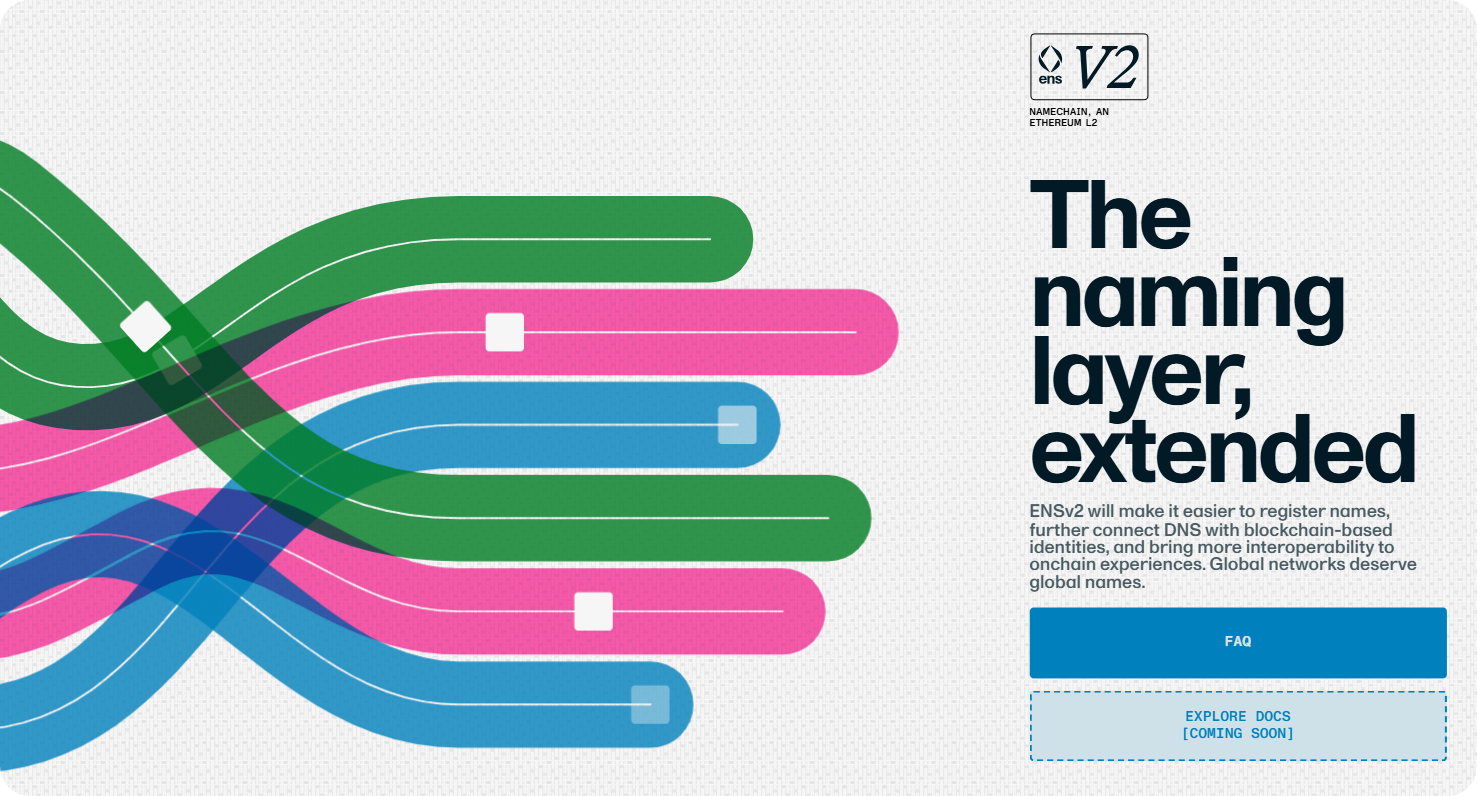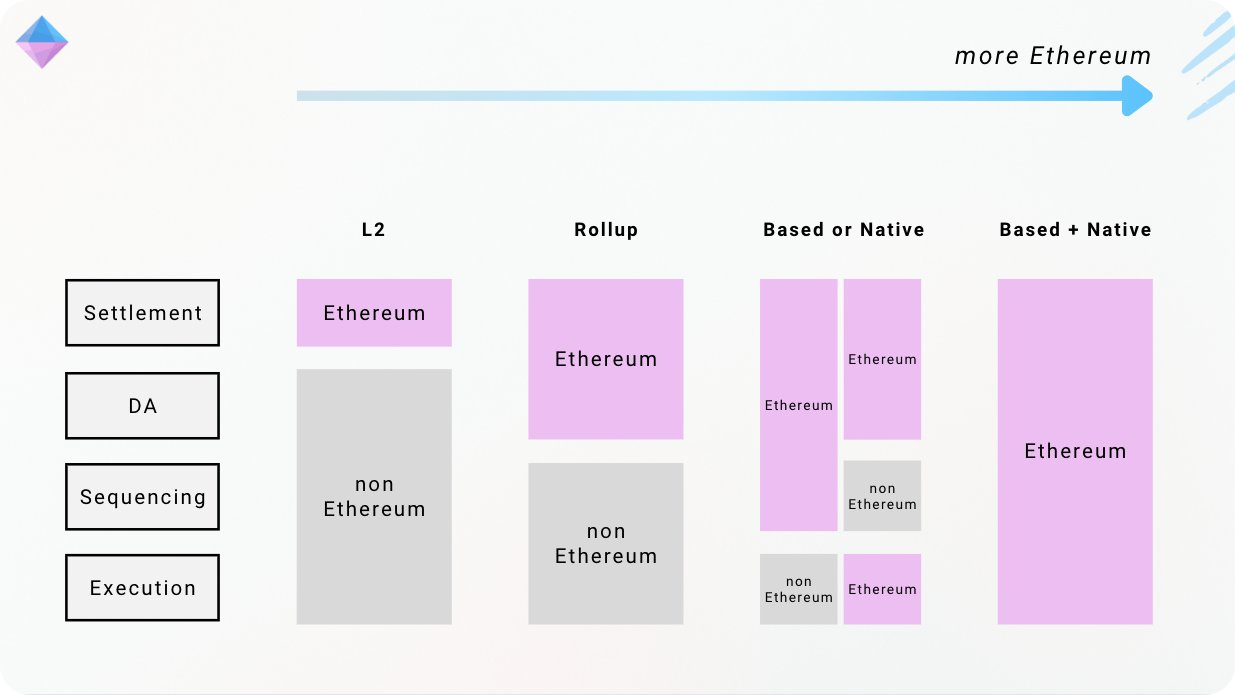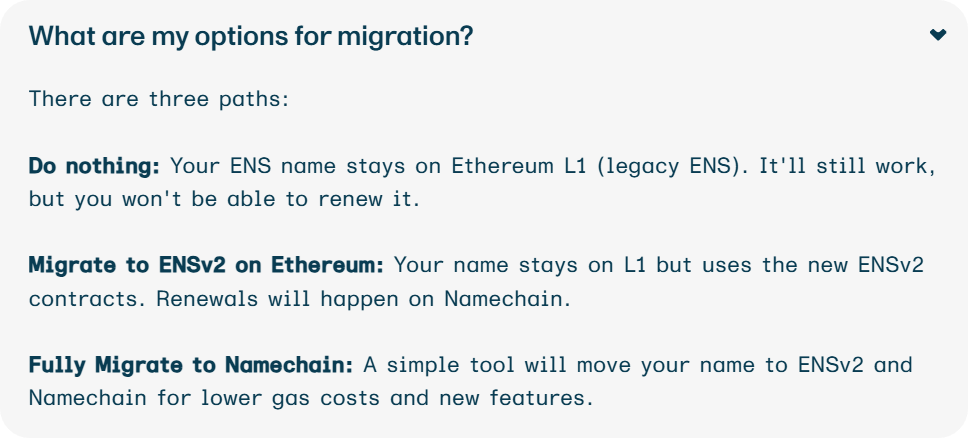Catching Up on ENS Namechain: What to Know

The Ethereum Name Service is among the most successful onchain apps of all time.
There are currently ~800k ENS owners across more than 161,000 domains. As it turns out, decentralized identity that's portable across other apps like Fileverse, Fluidkey, and beyond is quite popular.
Now, to take the next leg up for growth, the ENS team is working on ENSv2—a new optimized protocol architecture being developed in tandem with Namechain, a dedicated L2 for ENS that's being built on Linea's zkEVM tech.

There's no word yet on Namechain's exact launch date, but now we know more about what to expect here thanks to the recent release of the ENSv2 Hub info center.
That said, per the new FAQ and other publicly available info, a few things are already standing out about the ENSv2 vision. Some of the main pillars to keep in mind:
Potentially Based?
The north star for Namechain is offering ENS users cheap and fast transactions through dedicated blockspace.
Toward that end, we know out of the gate that the L2 will be a custom instance of Linea's rollup infra, but the operative word there is custom. That's because Linea is a traditional zero-knowledge (ZK) rollup, while ENS is exploring launching Namechain as a based rollup.
A based rollup is an L2 that uses Ethereum for transaction sequencing instead of using a bespoke sequencer. This design offers various advantages, like cheaper costs for users and strong security guarantees.

Longer term, the ENS team is exploring eventually moving Namechain to a native rollup model, which would see the L2 effectively "enshrined" such that it tightly integrates with Ethereum's core transaction rules—something to keep an eye on going forward.
Per-Name Registries
In the ENS system as it exists today, all .eth domains are tracked and managed through a single, central registry contract on Ethereum.
In contrast, one of the biggest changes coming in the ENSv2 debut on Namechain is the arrival of standalone registry smart contracts for every .eth name.
This hierarchical approach will offers true domain ownership down to the contract level, and it'll provide users much more flexibility. With this design, you'll be able to easily set custom permissions, delegate subname issuances, or lock down access as you see fit.
All in all, this shift will make managing many ENS names much simpler, which will be particularly useful for larger groups like communities, DAOs, etc.
Crosschain Resolution
The process of resolving (i.e. fetching info about a given domain) in the current ENS protocol is centered on Ethereum.
In ENSv2, domains will be registered on Namechain, but this upgrade will also introduce a new Universal Resolver mechanism. This crosschain system will work with CCIP-Read to allow resolving ENS names anywhere, whether that's offchain or on Ethereum, Namechain, or other L2s.
In other words, your .eth name will become interoperable basically everywhere.
Plus, apps won't need chain-specific logic or custom integration code to look up ENS records, as the Universal Router will provide a single streamlined gateway for pulling the info they want. This will be a big level-up for portable onchain identity.
Stablecoins Incoming
Another notable change coming to ENSv2 has to do with pricing.
Today, ENS facilitates name registrations and renewals via ETH payments. But ETH is a volatile crypto as we all know, and denominating transactions in it can be off-putting for green onchain newcomers.
As such, ENSv2 is introducing support for stablecoin payments, specifically USD-denominated stablecoin payments, to offer more predictable and familiar pricing.
It seems a sure thing that USDC will be supported from day one accordingly, but we'll have to wait and see what other stables ENS might choose to integrate, e.g. USDT, USDe, USDS, etc.
What Next?
As things stand, the ENSv2 roadmap shows the effort is currently in Phase 2 of its development, which centers around the finalizing of the architecture's new smart contract designs.
Next up, Phase 3 will see Namechain deployed, and then Phase 4 will entail 1) the rollout of the ENSv2 contracts on Ethereum and Namechain, and 2) syncing name data from the legacy ENS contracts to Namechain.
The dates for these next phases are TBD, but we do already know what to expect as users when they arrive. You can choose to do nothing, but you won't be able to renew your name when it expires. Alternatively, you can migrate your names to ENSv2 on Ethereum or fully migrate them to Namechain. Up to you!

If you want to access the entire suite of new ENSv2 features, opt for the full migration path. If you want to keep your names on Ethereum but still renew them, you won't have to migrate them to Namechain to do so, as you'll be able to use ENS there without bridging.
In the meantime, keep an eye on ENSv2 Hub, which will soon host the official ENSv2 documentation and more development updates. A new paradigm is coming to identity online, so be ready when it lands.